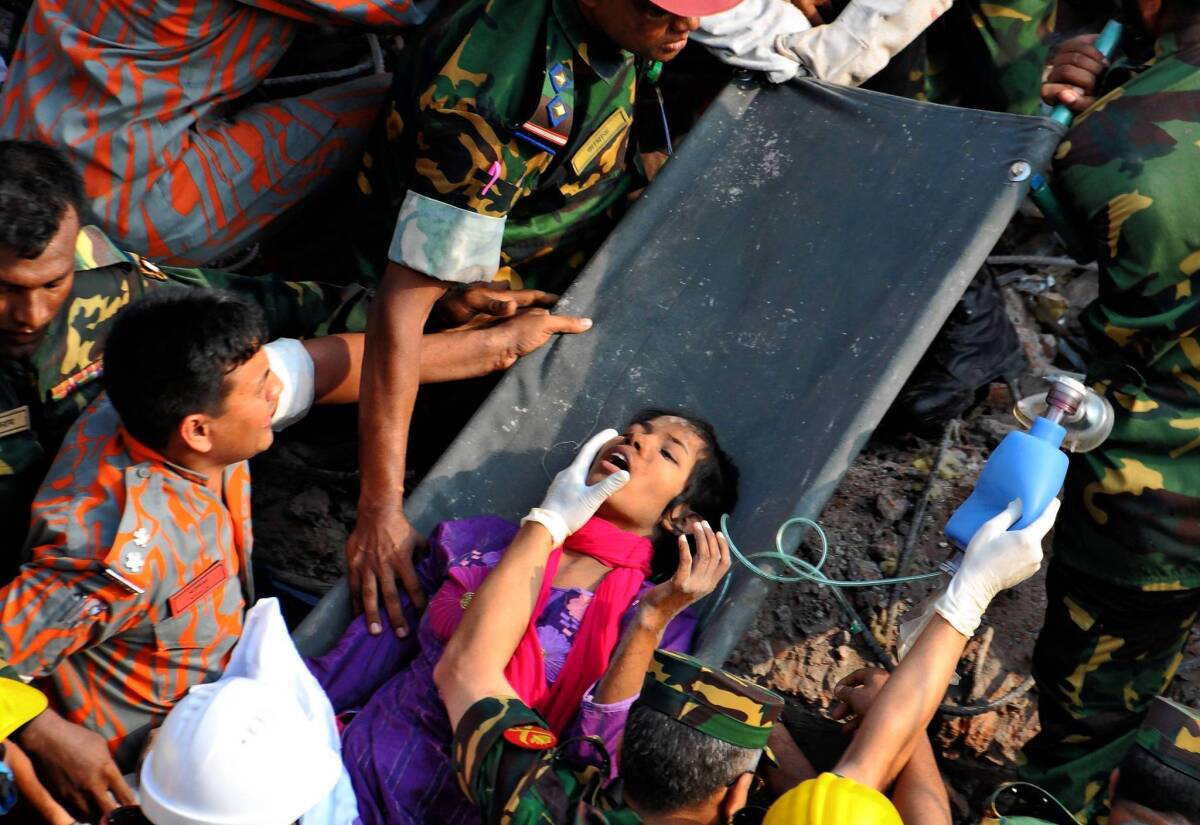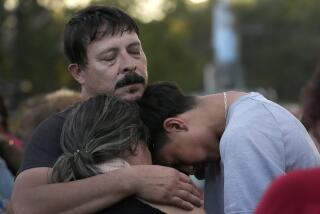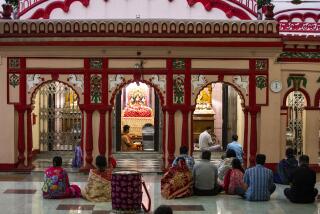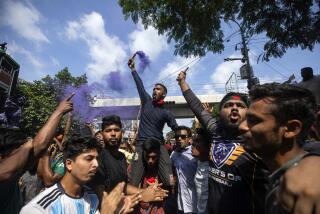Bangladesh survivor of building collapse rescued

NEW DELHI â In a development described as miraculous, a woman trapped in rubble for 17 days emerged alive Friday from the remains of a building that pancaked just outside Dhaka, the capital of Bangladesh.
Speaking from her hospital bed, the survivor, a seamstress identified with the single name Reshma in local news reports, told a Bangladeshi television station that she stayed alive by eating dried food, which ran out after 15 days, and drinking sparingly from bottles of water she had around her in the wreckage of the Rana Plaza building.
More than 1,000 bodies have been pulled from the debris of the illegally built structure, which housed five garment factories. The disaster has focused a global spotlight on the often dismal conditions of workers in poor countries who make apparel for Western consumers.
On Friday, when the remains of at least 73 additional victims were discovered, the televised rescue helped boost the spirits of the battered nation.
The discovery of the woman reportedly occurred when a worker walking through the rubble heard a cry and saw a hand waving.
âAs we were clearing rubble, we called out if anyone was alive,â an unnamed rescuer told the Somoy TV channel. âThen we heard her saying, âPlease save me, please save me.â Since then she has been talking to us.â
The survivor was given water and cookies as the army ordered bulldozer and crane operators to halt their cleanup work. Using a handsaw, welding and drilling equipment, workers in orange jumpsuits struggled to cut through iron rods and other debris, as an ambulance and oxygen tank stood ready.
When the woman was freed about 40 minutes later, a loud cheer erupted from rescuers and military personnel on the scene, many of whom prayed and raised their arms in triumph.
Video showed the woman being carried to the ambulance on a stretcher as rescue workers placed an oxygen mask over her face.
âShe is in good health,â army Maj. Moazzem Hossain told reporters.
According to reports, the woman worked on the buildingâs third floor.
âI heard voices of the rescue workers for the last several days,â she told television reporters. âI kept hitting the wreckage with sticks and rods just to attract their attention.
âNo one heard me,â she said. âIt was so bad for me. I never dreamed Iâd see the daylight again.â
Maj. Gen. Chowdhury Hasan Suhrawardy, supervisor of the local military units assisting in the rescue, said Reshma told him that three other people with her had died.
âWe will continue our search until a survivor or a dead body is there,â he said, according to the Associated Press.
More than 2,500 people have been rescued since the collapse April 24, mostly in the hours immediately afterward, but crews have also pulled more than 1,040 bodies from the wreckage. It is the worst industrial accident in the impoverished nationâs history and by some accounts the worldâs deadliest garment industry disaster.
âThis rescue is definitely great; everyoneâs amazed,â said Rashna Imam, an attorney in Dhaka. âBut the downside is everyone will be hoping there are more survivors there.â
For days after the disaster, relatives crowded around the wreckage, carrying photos of missing loved ones. As hours and days passed, hope and worry turned to anger over lax government oversight and the close connections between politicians and factory owners in Bangladesh.
âThis rescue will ease some of the tension and anger toward the government,â said Bobby Hajjaj, a Dhaka-based business development consultant and newspaper columnist. It could also improve the image of the president, Abdul Hamid, whose brother died just before Hamid was inaugurated last month. The Rana Plaza disaster followed soon after.
âA large majority of the people are superstitious and many, including parliamentarians, were starting to call our new president jinxed,â Hajjaj said. âThis rescue might even be seen as that jinx being broken.â
According to disaster management officials, 717 bodies have been returned to relatives or remain in morgues, 131 are in a holding center set up in a high school, and 156 are decomposed beyond recognition and are being buried by a charitable organization.
In some cases, rescuers reportedly have called phone numbers stored on recovered cellphones to help identify the bodies of victims. Authorities also have been collecting DNA samples from relatives to compare with that of the corpses.
In recent days, two rescue workers were reportedly admitted to a local hospital after becoming sick from the odor of decomposing bodies in the South Asian heat.
The building collapse was among a string of disasters in recent years to hit Bangladeshâs $20-billion garment industry, which accounts for 80% of the nationâs exports and is the worldâs second-largest after China. A fire at a clothing factory in Dhaka killed eight people Thursday, including its owner, and a factory fire in November killed more than 110 workers.
The latest disasters have sparked foreign calls for reform as Western apparel companies battle charges that their production is built on exploitation. The average wage for garment workers in Bangladesh is about 20 cents an hour, labor activists say, and many of the factories lack fire escapes, windows or emergency exits.
This week, in a bid to prevent foreign clothing companies from buying elsewhere and to allay safety fears and address mounting anger among garment workers, the Bangladeshi government said it was temporarily closing 18 factories until safety violations were rectified.
The government has also pledged to add 200 building inspectors by yearâs end, retrain workers, repair problematic factories and introduce a bill in Parliament to allow for unions and collective bargaining.
Bangladeshi Nobel laureate Muhammad Yunus said in an article published in Bangladeshi newspapers this week that the tragedy was a âsymbol of our failure as a nation,â and urged citizens and the government to join in fostering reform.
Tanvi Sharma in The Timesâ New Delhi bureau contributed to this report.
More to Read
Sign up for Essential California
The most important California stories and recommendations in your inbox every morning.
You may occasionally receive promotional content from the Los Angeles Times.










